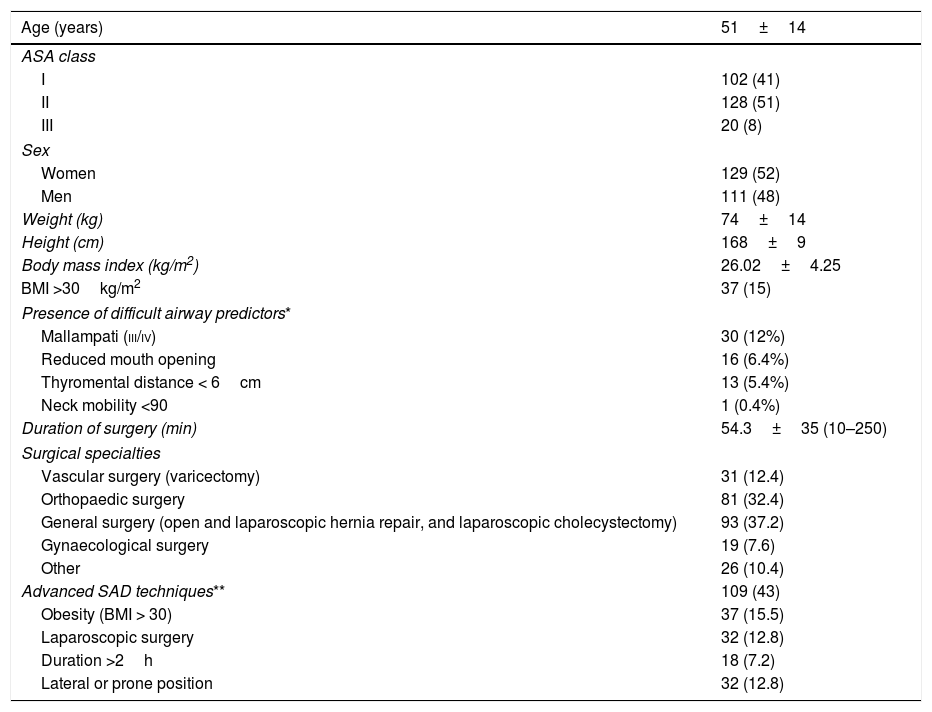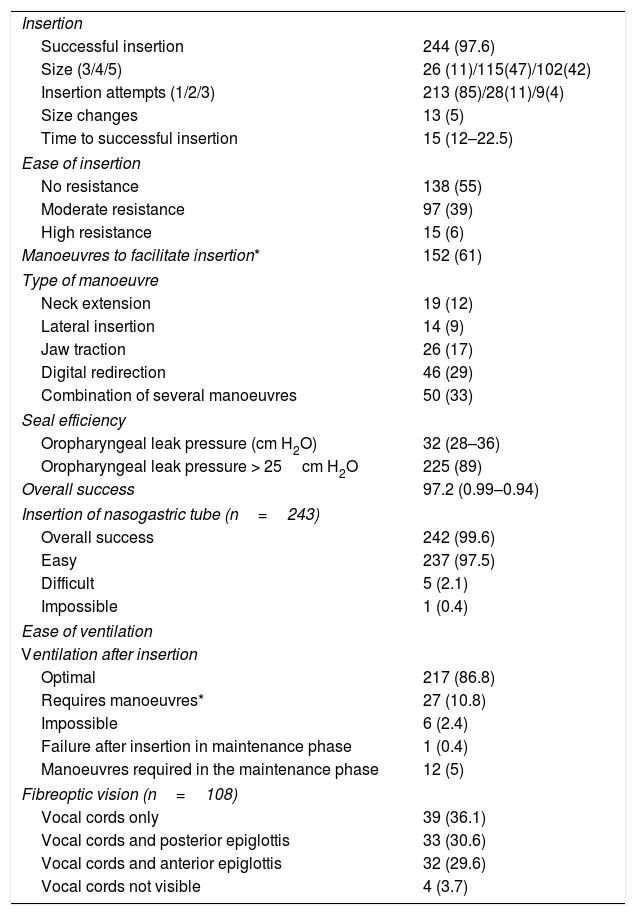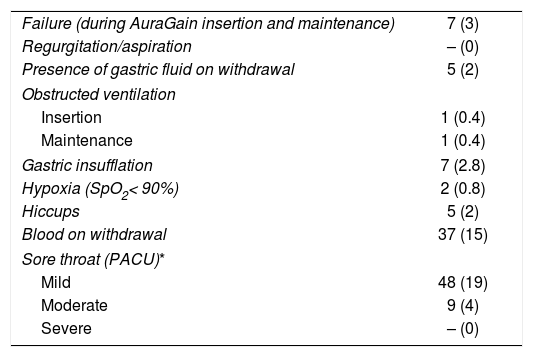The main objective of this study was to evaluate the performance of the Ambu™ AuraGain™ device by determining its main parameters of use and complications.
MethodsA total of 250 adult ASA physical status I to III patients from five hospitals in Spain who received general anaesthesia with a supraglottic airway (SGA) device were enrolled in this study.
ResultsThe primary outcome was analyzed for 244 patients and a median OLP of 32cm H2O (IQR 28–36cm H2O) was obtained. Insertion was achieved at first attempt in 85% of cases, and overall in 98% of cases, in a median time of 15s (12–22.5). We applied manoeuvres in 61% of patients to facilitate the process. Ventilation was effective in 97.2% of the interventions (95% CI 0.99–0.94) throughout the procedure. Insertion of the gastric tube was easily performed in 99.6% of the patients, and the vocal cords were viewed by fibrobronchoscopy in 96.3% of cases. Logistic regression analysis identified the use of sizes smaller than those recommended as a risk factor for low OLP (<25cm H2O). The main complication recorded was the presence of blood when withdrawing the SGA device (15%).
ConclusionsOur results confirm that the use of AuraGain allows airway management in a reliable and effective way achieving high OLP and low incidence of associated complications, establishing it as a useful alternative in the routine clinical setting of anaesthesiologists. AuraGain performance was consistent in all five centres.
Ambu® AuraGain® es un dispositivo supraglótico de segunda generación de un solo uso, recientemente lanzado al mercado, que permite la intubación traqueal guiada con fibrobroncoscopio. El principal objetivo del presente estudio multicéntrico fue evaluar el éxito global de Ambu AuraGain como dispositivo de ventilación en una amplia gama de indicaciones y características de pacientes.
MétodosSe incluyeron un total de 250 pacientes adultos con estado físico ASA i a iii, procedentes de cinco hospitales de España, que recibieron anestesia general y en los que se utilizó para el manejo de la vía aérea AuraGain.
ResultadosEl objetivo primario se evaluó en 244 pacientes y AuraGain fue efectiva en el 97,2% de las intervenciones (IC 95%, 0,99-0,94) durante todo el procedimiento. La mediana de la presión de fuga orofaríngea (PFO) fue de 32cm H2O (RIQ 28-36cm H2O). La inserción se logró en el primer intento en el 85% de los casos, y de forma global en el 98% de los casos, con una media de tiempo de inserción de 15s (12-22,5), aunque el 61% de los pacientes requirió maniobras para facilitar su inserción. La inserción de la sonda gástrica se realizó fácilmente en el 99,6% de los pacientes, y la visión fibroscópica mostró visión de las cuerdas vocales en el 96,3% de los casos. Mediante análisis de regresión logística se identificó que el uso de tamaños más pequeños que los recomendados fue un factor asociado a una baja PFO (< 25cm H2O). La principal complicación registrada fue la presencia de sangre en la retirada del dispositivo (15%).
ConclusionesNuestros resultados confirman que el uso de AuraGain® proporciona una ventilación fiable y eficaz, logrando un alto nivel de PFO constante en una amplia gama de indicaciones. El éxito de funcionamiento global fue consistente en los cinco centros, con una baja incidencia de complicaciones asociadas.














